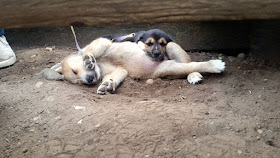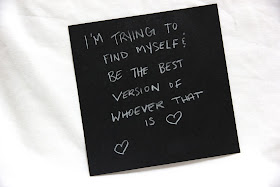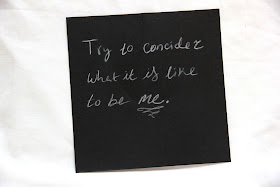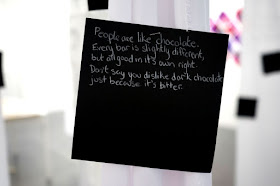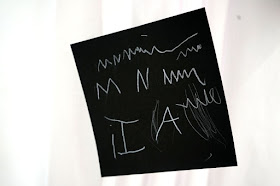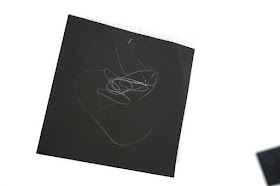As we round the corner on a new decade, I find myself contemplative about the evolution of our species. What have we changed? Where are we going? What changes are to come? And, as so many ask these days, how can we save ourselves? How can we "be the change"?
In her book, Braiding Sweetgrass, Robin Wall Kimmerer talks about her university students' inability to imagine a healthy relationship between humans and nature:
The other day I drove my kids past the recreation centre in Burnaby where I first kindled my desire to connect children with nature. Around two decades ago, before I had children of my own, I took my eight-to-ten-year-old art group out to the small planting of conifers and rhododendrons beside the parking lot at that rec centre. It was the only forest-like area between the mall, the skytrain and the office buildings. Beside the smooth concrete pathway, I and this group of kids dug our fingers into the grass and needles and found worms coming skyward after recent rainfall. We saved one from a puddle. We gathered cones and twigs, and the children discovered that cones actually contain seeds of the trees they fell from. Although I tried valiantly to connect our indoor art adventures to this one outing, it was plainly evident to me that the greatest learning we'd had by far was the short fifteen minutes we spent out poking fingers into the earth. This was the moment of connection - of discovering a sense of home and belonging in nature. I have spent the last two decades bringing people into the wilderness, welcoming them to these spaces where nature still displays its fabulous and curious habits, and beckoning them to feel at home. Because this is our home.
In the last decade forest schools have become increasingly popular; as have explorative and self-directed learning. These things, I think, are beacons of hope for our civilization. As we reintegrate with nature in a curious and explorative way, we become, as a species, attuned to our own existence, and better able to understand our own nature. As we discover the amazing interactions between other species in the wild, we discover our own interactions with them, as well. We discover our mutual needs and gifts. We discover our sameness.
But how will this help us survive the climate emergency? In very practical terms, explorative wilderness play helps people of all ages become more resilient and resourceful; both qualities needed to survive any time, but especially in the unpredictable time we're entering now. A few years ago, during the worst smoke-season we've had yet on Canada's west coast, I bought an air purifier that barely managed to keep the smoke out of one room of my home. But I took my Wild Art groups into the forest nearby, to discover the clear green-filtered air and relatively smoke-free play areas. During the hot smoky season we found respite under the shelter of cedars and hemlocks, leaning our bodies against the cool logs and reaching fingers into the mud that remained from the previous winter's flood. The children learned resourcefulness as they wrote, developed and performed a play about consumerism (their own idea, but not surprising given the climate of fear in the forest fire season). They connected with our local recycling centre and second-hand store for props, and created other props and a set from objects found in the forest.
In addition to resilience and resourcefulness, the deeply-felt connection that nature exploration develops between humans, and between humans and other species, helps us to see the bigger picture. We discover the trees' need for moss, holding water like a sponge, as we discover our own need for the damp cool that that moss provides, and the shelter of the trees' leaves. Symbiotic relationships are everywhere, and the more of them we discover, the greater our perception grows; the bigger our picture becomes. Climate change is a very big picture. If we want to solve it, we need to understand the interconnectedness of all things. We need to know that we matter.
And mostly, in this world where happiness is sold on in-game-advertising and the price-tags on our brand-name merchandise, we can discover happiness in nature. The pursuit of happiness continues to be a ubiquitous aim of the human spirit, and we're not going to save our home and future by denying ourselves joy. Our salvation will not come from starvation and asceticism. It will come from abundance. We just need to start seeing abundance - happiness - in the things we need to save, and then we'll find ourselves ever more willing to save them. Saving the trees is much easier when the trees are our children's playthings; when we know their scent and the feeling of their cool skin on ours in the summer; when we have experienced their canopy protecting us from the heat and the smoke. Saving frogs and beetles and worms and slugs is much more delightful when we're not envisioning some far-away ecosystem we've never walked in, but noticing the appearance of worms after rain in our own neighbourhood puddles.
Wilderness isn't far away. Wilderness is happening in the city puddle under our feet, or, as we once discovered with the help of our trusty microscope, in the surface of an old moldy piece of cat food! Wilderness is, yes, in the Australian bush, burning up with its koalas heading ever closer to extinction. And it is also in the weeds along the edge of a forgotten urban alley. It is in the heart of the little girl playing there, digging her fingers in past plastic wrappers and grasshoppers to find the treasure she buried there last winter: A fir cone full of now-sprouting seeds, which she carefully pulls out, and plants again.
In the last decade we have become, as a species, accustomed to watching our home burn from the other side of the street, then turning our back on it and looking towards our cell phones for a quick emotional fix. We've become accustomed to blinding ourselves to our own feelings of despair and helplessness; using capitalist promises and lies to soothe our broken hearts. Now it's time to get back over there and put out the flames. I think about Robin Wall Kimmerer's despair at her students' lack of connection with wilderness and I think to myself that if we allow our children to find joy in the discovery of small things, the next generation will be the first to return to nature. When they reach university, the scope of their vision will be greater, because they have seen and known the wilderness beneath their feet. They will integrate the great technological systems of their day with the great system of the wilderness and those of us who follow them will, finally, be the change we already know ourselves to be.
Happy new decade. May we connect with each other and with our wilderness.
*image: copyright Emily van Lidth de Jeude
“We but mirror the world. All the tendencies present in the outer world are to be found in the world of our body. If we could change ourselves, the tendencies in the world would also change. As a man changes his own nature, so does the attitude of the world change towards him. This is the divine mystery supreme. A wonderful thing it is and the source of our happiness. We need not wait to see what others do.” – Mahatma GandhiThis morning I read that two firefighters have died fighting Australia's massive bush fires. That's 10 people so far this year in a fire season that's only half over, according to Victoria emergency services minister Lisa Neville. Over 1000 homes have burned so far, but it's not a shock, anymore. It's the news we're accustomed to hearing. I was, however, surprised to read that the prime minister apologized for having been on vacation at the time. His compassion is news; in our current human state of trauma and overwhelming feelings of helplessness, many of us have become dispirited, numbed by the constant reports of tragedy. We are accustomed to looking away. My children know that in every season people around the world die of heat, floods, storms, wildfires and other climate-related disasters. Sometimes we watch the smoke on the news; sometimes we're battling to keep it out of our own lungs. It's the end of the decade, the end of my children's childhood, and the beginning of a new epoch for humanity. And what can we do to save ourselves?
In her book, Braiding Sweetgrass, Robin Wall Kimmerer talks about her university students' inability to imagine a healthy relationship between humans and nature:
"As the land becomes impoverished, so too does the scope of their vision. I realized that they could not even imagine what beneficial relations between their species and others might look like. How can we begin to move toward ecological and cultural sustainability if we cannot even imagine what the path feels like? If we can't imagine the generosity of geese? These students were not raised on the story of Skywoman."I would like to suggest that connection is how we will save ourselves.
The other day I drove my kids past the recreation centre in Burnaby where I first kindled my desire to connect children with nature. Around two decades ago, before I had children of my own, I took my eight-to-ten-year-old art group out to the small planting of conifers and rhododendrons beside the parking lot at that rec centre. It was the only forest-like area between the mall, the skytrain and the office buildings. Beside the smooth concrete pathway, I and this group of kids dug our fingers into the grass and needles and found worms coming skyward after recent rainfall. We saved one from a puddle. We gathered cones and twigs, and the children discovered that cones actually contain seeds of the trees they fell from. Although I tried valiantly to connect our indoor art adventures to this one outing, it was plainly evident to me that the greatest learning we'd had by far was the short fifteen minutes we spent out poking fingers into the earth. This was the moment of connection - of discovering a sense of home and belonging in nature. I have spent the last two decades bringing people into the wilderness, welcoming them to these spaces where nature still displays its fabulous and curious habits, and beckoning them to feel at home. Because this is our home.
In the last decade forest schools have become increasingly popular; as have explorative and self-directed learning. These things, I think, are beacons of hope for our civilization. As we reintegrate with nature in a curious and explorative way, we become, as a species, attuned to our own existence, and better able to understand our own nature. As we discover the amazing interactions between other species in the wild, we discover our own interactions with them, as well. We discover our mutual needs and gifts. We discover our sameness.
But how will this help us survive the climate emergency? In very practical terms, explorative wilderness play helps people of all ages become more resilient and resourceful; both qualities needed to survive any time, but especially in the unpredictable time we're entering now. A few years ago, during the worst smoke-season we've had yet on Canada's west coast, I bought an air purifier that barely managed to keep the smoke out of one room of my home. But I took my Wild Art groups into the forest nearby, to discover the clear green-filtered air and relatively smoke-free play areas. During the hot smoky season we found respite under the shelter of cedars and hemlocks, leaning our bodies against the cool logs and reaching fingers into the mud that remained from the previous winter's flood. The children learned resourcefulness as they wrote, developed and performed a play about consumerism (their own idea, but not surprising given the climate of fear in the forest fire season). They connected with our local recycling centre and second-hand store for props, and created other props and a set from objects found in the forest.
In addition to resilience and resourcefulness, the deeply-felt connection that nature exploration develops between humans, and between humans and other species, helps us to see the bigger picture. We discover the trees' need for moss, holding water like a sponge, as we discover our own need for the damp cool that that moss provides, and the shelter of the trees' leaves. Symbiotic relationships are everywhere, and the more of them we discover, the greater our perception grows; the bigger our picture becomes. Climate change is a very big picture. If we want to solve it, we need to understand the interconnectedness of all things. We need to know that we matter.
And mostly, in this world where happiness is sold on in-game-advertising and the price-tags on our brand-name merchandise, we can discover happiness in nature. The pursuit of happiness continues to be a ubiquitous aim of the human spirit, and we're not going to save our home and future by denying ourselves joy. Our salvation will not come from starvation and asceticism. It will come from abundance. We just need to start seeing abundance - happiness - in the things we need to save, and then we'll find ourselves ever more willing to save them. Saving the trees is much easier when the trees are our children's playthings; when we know their scent and the feeling of their cool skin on ours in the summer; when we have experienced their canopy protecting us from the heat and the smoke. Saving frogs and beetles and worms and slugs is much more delightful when we're not envisioning some far-away ecosystem we've never walked in, but noticing the appearance of worms after rain in our own neighbourhood puddles.
Wilderness isn't far away. Wilderness is happening in the city puddle under our feet, or, as we once discovered with the help of our trusty microscope, in the surface of an old moldy piece of cat food! Wilderness is, yes, in the Australian bush, burning up with its koalas heading ever closer to extinction. And it is also in the weeds along the edge of a forgotten urban alley. It is in the heart of the little girl playing there, digging her fingers in past plastic wrappers and grasshoppers to find the treasure she buried there last winter: A fir cone full of now-sprouting seeds, which she carefully pulls out, and plants again.
In the last decade we have become, as a species, accustomed to watching our home burn from the other side of the street, then turning our back on it and looking towards our cell phones for a quick emotional fix. We've become accustomed to blinding ourselves to our own feelings of despair and helplessness; using capitalist promises and lies to soothe our broken hearts. Now it's time to get back over there and put out the flames. I think about Robin Wall Kimmerer's despair at her students' lack of connection with wilderness and I think to myself that if we allow our children to find joy in the discovery of small things, the next generation will be the first to return to nature. When they reach university, the scope of their vision will be greater, because they have seen and known the wilderness beneath their feet. They will integrate the great technological systems of their day with the great system of the wilderness and those of us who follow them will, finally, be the change we already know ourselves to be.
Happy new decade. May we connect with each other and with our wilderness.
*image: copyright Emily van Lidth de Jeude








